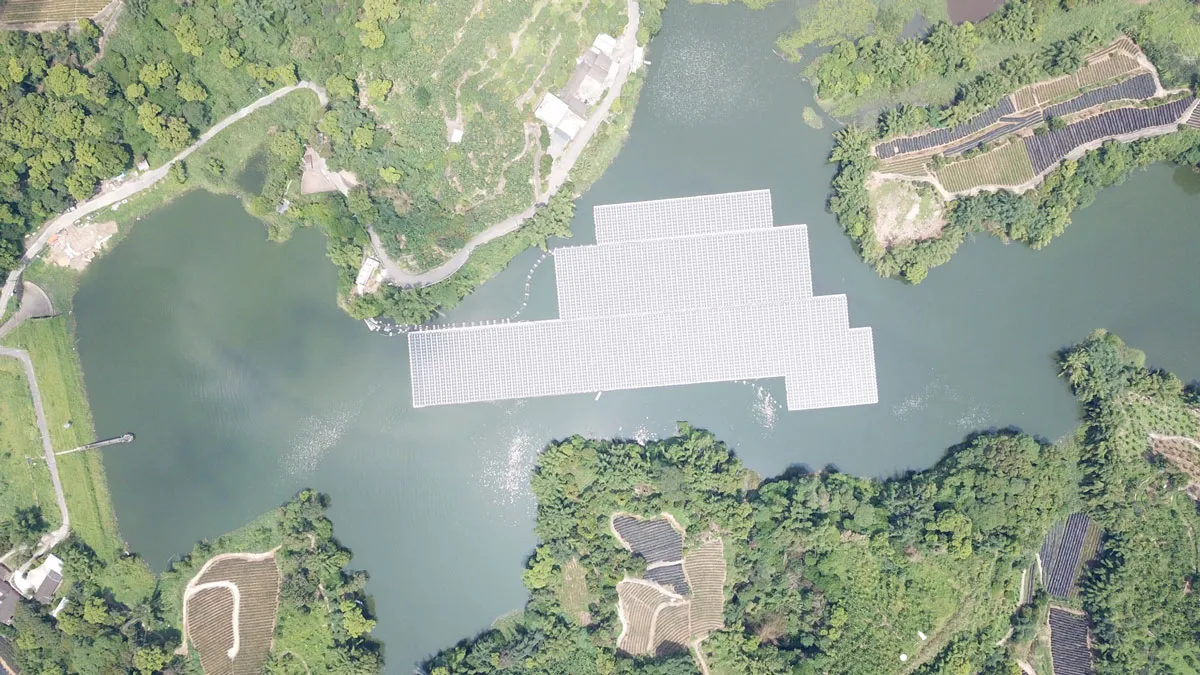Could Floating Solar Panels Help Mitigate Climate Change?
“Floatovoltaics” are an emerging technology, but their environmental impacts are still unknown.

 Why you can trust us
Why you can trust us
Founded in 2005 as an Ohio-based environmental newspaper, EcoWatch is a digital platform dedicated to publishing quality, science-based content on environmental issues, causes, and solutions.
By Sofia Moutinho
Many countries bet on solar panels when engaging in the switch to cleaner energy. But the technology requires much larger areas than conventional fossil fuel plants to generate the same amount of electricity. An emerging solution to save space is to float the panels on bodies of water: floatovoltaics. Scientists believe this new approach could help solar energy to scale globally and fight climate change, but its environmental impacts are largely unexplored.
The world’s first commercial floatovoltaic system was installed on an irrigation pond at a California winery in 2008. Since then, bigger plants with a capacity of hundreds of megawatts have been built on lakes and hydropower reservoirs in China, and more are planned in Southeast Asia and Brazil.
“Floatovoltaics are one of the fastest-growing power generation technologies today and a promising low-carbon energy source,” said aquatic ecosystem ecologist Rafael Almeida, an assistant professor at the University of Texas Rio Grande Valley.
Almeida explained that ideally, floating panels are placed in human-made bodies of water, such as irrigation channels and the reservoirs of hydropower plants, not taking up land that could otherwise be used for nature preserves or food production. Reservoirs at hydropower plants, especially, have the advantage of already having the infrastructure to distribute electricity.
Almeida and his colleagues calculated the potential of countries worldwide to use floatovoltaics on the basis of the area of their hydropower reservoirs. They found that countries in Africa and the Americas have the highest potential of generating energy through the technology. Brazil and Canada, for example, could become leaders in the sector because they require only about 5% reservoir coverage to meet all their solar energy demands until midcentury. The scientists will present their results on 12 December at AGU’s Fall Meeting 2022.

Assessing the Environmental Impact
“We have to seriously consider all possibilities to increase low-carbon energy production while minimizing land use intensities,” said Almeida. “But we also need to understand how to reduce unwanted social and ecological repercussions,” he added, explaining that we still know little about the impacts of covering large swaths of water with solar panels.
Regina Nobre, a freshwater ecologist at Paul Sabatier University in Toulouse, France, agrees. Nobre was not involved in the recent research but is part of a group that has just started a pioneering effort to monitor the environmental impacts of floatovoltaics in old gravel pit lakes in Europe. These pits were originally created for mining but naturally fill with river water when abandoned and host diverse aquatic life. Nobre doesn’t have results yet but believes the evidence of their environmental impact study will be crucial for policymakers.
“This technology is growing fast, and we urgently need more data to understand the impacts and give a better direction for environmental agencies and public policies,” she said.
For one thing, extensive panel coverage could block light in the water, Nobre said, altering the feeding and reproduction patterns of algae, which could lead to oxygen depletion in the lake and have cascading effects on the whole ecosystem, harming local fisheries and other wildlife.
Another possibility is that the panels could interfere with the exchange of greenhouse gases such as methane between the water and atmosphere, perhaps offsetting decarbonization benefits. But the real consequences are unpredictable without studies and will likely vary with different panel designs, area coverage, and landscapes, both scientists pointed out.
“We need to take a precautionary approach,” said Almeida. “On one hand, we can’t put too many barriers to this potentially important sector to advance, but, on the other hand, we need to understand the trade-offs and fill our prevailing knowledge gaps with more studies.”
Reposted with permission from Eos.
Subscribe to get exclusive updates in our daily newsletter!
By signing up, you agree to the Terms of Use and Privacy Policy & to receive electronic communications from EcoWatch Media Group, which may include marketing promotions, advertisements and sponsored content.

 233k
233k  41k
41k  Subscribe
Subscribe 



